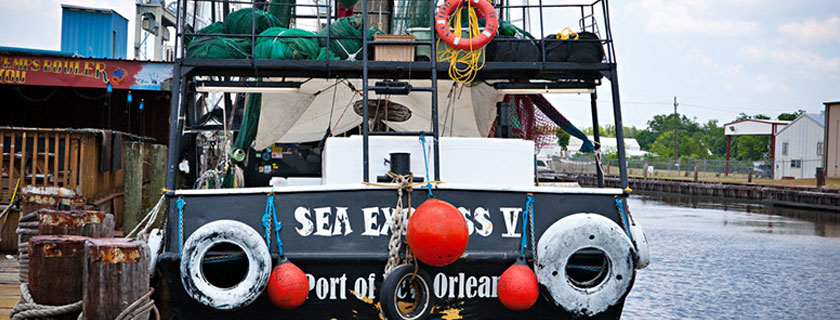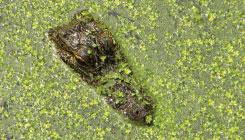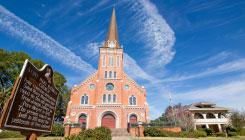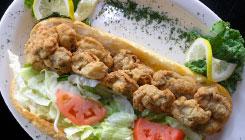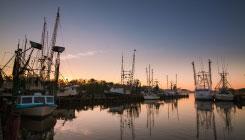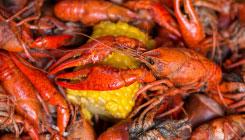Media Kit
The Tourist Commission offers a variety of services to visiting journalists:
Assist with a personalized itinerary, lodging, meals and arranging personal interviews.
Assisting with navigating and getting around Vermilion Parish. Step-on guide service is available if needed.
We also have photography available to you to enhance your articles.
The Tourist Commission will use the following qualifications in assisting travel writers:
- Provide samples of previous work, within 2 years. This is required of all inquiries.
- Provide specific information about the nature of your visit, subject interest and length of stay.
- The Tourist Commission will negotiate reduced lodging rates (complimentary stays will be at the discretion of the property manager).
- Cancellations or changes must be made to the Tourist Commission 48 hours in advance.
- Provide tear sheets or links on any resulting published stories within one month of publication.
Contact the Vermilion Parish Tourist Commission at 337-898-6600 should you need more information.
Story Ideas
Cajun Character
When you hear words like pirogue1, turducken2, and fais-do-do3, you know you’re in Cajun Country. According to the U.S. Census, this is the most Cajun place on earth, so you’ll hear these and many more!
A destination’s character is defined by its people and how they interact with its lands and resources. Here in Cajun Country, the picturesque landscape is home to folks who value tradition and ingenuity. They work hard and they play hard. They welcome visitors and they are the reason so many come back again and again. They are the force behind the storied past, the successful business communities, and the very bright future here.
Fishermen, shrimpers and crabbers work the inland and Gulf waters in businesses passed down through generations and they put the fresh seafood on tables both near and far. Farmers work the rice and sugarcane fields that have dotted the landscape for decades. Families celebrate together with world renowned food and fervor.
A visit to one of the many small museums of the region, like the Acadian Museum of Erath or Le Musée de Kaplan, will illuminate the history and culture of Vermilion Parish and its people who settled in this area from Nova Scotia.
Travelers become a part of the community as they enjoy the famous local cuisine at one of the dozens of locally owned restaurants serving authentic Cajun meals. The music of the region takes center stage at spots like Touchet's, in Maurice, home to the French Jam Sessions, or Museum Café in Erath where French and Cajun music fill the air.
1 A small cypress dugout boat
2 The famous turkey stuffed with a duck, stuffed with a chicken
3 A street party, which is part of most Cajun celebrations
Bayou Birding & Wetland Walking Trails Offer Authentic Back-to-Nature Experience
The farmlands, marshlands and bayous of Vermilion Parish make up a diverse landscape that is home to an amazing array of birds and other wildlife. Whether birders working on their life list or nature lovers just looking to get off the beaten path, visitors love the trail options that wind their way through the region. Roseate spoonbills, pipers, snowy egrets, herons and pelicans are all native to the area, as is a non-migratory flock of Whooping Cranes recently reintroduced to the Parish. The live among the native plants lining the trails, including live and water oaks, American sycamore, sweet gum, water hickory, and dwarf palmetto.
White Lake Wetlands Conservation Area is the newest addition to Vermilion Parish’s eco-tourism amenities. This two-mile trail on 32 acres features a covered picnic area, educational kiosks and an observation tower.
Vermilion Parish is a part of America's WETLAND Birding Trail. Here visitors can explore some of Louisiana's most productive natural habitats along the coast and some of the best birding in the country. It’s also a great spot to soak up some of the Louisiana's unique history and culture. The Vermilion Birding Loop traces the lower reaches of the Bayou Vermilion through the heart of Cajun Country.
The Cajun Corridor Scenic Byway connects the historic towns of Abbeville, Erath, Delcambre, Kaplan and Gueydan. This byway crosses the parish to reveal quaint towns, cattle, rice and sugarcane farms, waterfowl, tree lined bayous, museums, locally-owned eating establishments and much more.
A trip south along Hwy. 82 will bring you to the rural areas of our parish that are the home to our native wildlife. Hwy. 82 traverses coastal marshes around Pecan Island and through marshland inhabited by alligator, deer and nutria as well as native birds and other waterfowl as it winds toward the Gulf of Mexico. “Cheniers,” a type of coastal woodland dominated by coastal live oak, situated atop ancient beach ridges, also characterize this route. In Intracoastal City at the southern end of the Parish, the Leland Bowman Lock is a great place to watch boats, picnic or do some bird watching.
So Cajun You Can Taste It
Authentic Cajun food and fresh Gulf seafood are a huge part of the culture in Vermilion parish. People come from all over the nation to eat it. Families have spent generations preparing it. And farmers and fishermen produce it straight from local crops and catches.
Dozens of restaurants serve local fare. The have names like Dupuy's, Suire's and Soop's. That local fare is the most popular kind of cuisine here, and eating it is an adventure! It’s gumbo with that particular kind of roux. It’s po boys stuffed til they overflow. It’s raw oysters with local hot sauce. It’s alligator sausage and boudin balls. – The depth and diversity of the Cajun menu is something that must be experienced. There is no better place than the most Cajun Place on Earth to experience it!
One of the most famous specialties here can be found at Hebert's Specialty Meats, home of the turducken. These de-boned chickens, stuffed inside a de-boned duck, stuffed inside a turkey come with cornbread, pork or wild rice stuffing.
There are local markets that feature homegrown, seasonal fruits and vegetables. They support both retail customers and the local restaurants. Some other local businesses though, have customers throughout the world. Crops such as rice and sugarcane are prime examples. South Louisiana’s rice industry produces much of the rice consumed in the country and also exports to other countries. The same is true of sugarcane, which has been farmed here for more than 200 years and contributes more than $2 billion to the state’s economy.
Sportsman's Paradise
Louisiana is known as the Sportsman’s Paradise. From the piers off Highway 82 to the duck blinds of Pecan Island, sportsmen know Vermilion Parish as a haven for fishing and hunting. True sportsmen know there’s no place better.
Inshore fishing for redfish, flounder and speckled trout is amazing here. There are plenty of public launch facilities for those who bring their own boat. For some expert advice, there are experienced guide services with local captains who know the waters like the back of their hand.
The lush bottomlands of Vermilion Parish are nationally known for duck and geese hunting second to none. Hunting facilities operating in the area are plentiful and they provide guided or unguided hunting, both with and without overnight lodging.
In addition to its wealth of lakes and bays, bayous and wetlands, South Louisiana is also the gateway to the Gulf of Mexico and its bountiful fishery.
Fast Facts & Trivia
The turducken – a turkey stuffed with a boneless duck which is stuffed with a boneless chicken – is a Cajun specialty, with its origin attributed to Vermilion Parish. A local specialty foods shop touts, when enjoying a turducken “you'll think you've died and gone to Cajun heaven.”
Officially Roman Catholic under both France and Spain's rule, Louisiana’s boundaries dividing the territories generally coincided with church parishes. In 1807, the term “parish” was officially adopted by the legislature and has never changed.
A Fais-do-do (fay-doh-doh), originally called Festival of God, is a type of street dance derived from European religious festivals. Most Cajun festivals include a Fais-do-do as part of the celebration.
Cajun food evolved from the Acadian settlers and is rooted in resourcefulness, use of available ingredients and inventive ways. It is country cooking of southwest Louisiana and its gravies, stews and gumbos generally contain no tomatoes. Creole food, frequently found in New Orleans, uses tomatoes as a staple and hotter peppers in the seasonings. Creole is often described as “city food” while Cajun is called “country food.”
Abbeville is home of the Giant Omelette Celebration each November which concludes with the cooking of a 5,000-egg omelette in a 12-foot wide skillet.




